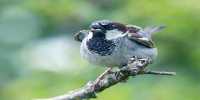This is an evolutionary advantage. It builds strong muscles of digging, hating, and aggression to help mothers protect themselves and their babies.
Moles live a difficult life underground. As a result, they have developed helpful adaptations such as digger-like claws. Female moles, in particular, have developed
an unusual technique: high levels of the male hormone testosterone.
For most of the year, female moles look and behave like males. They have an external vagina and an elongated clitoris with their male genitalia. But when the
the season for intercourse comes, testosterone levels drop and a vagina is formed; Intercourse and birth follow.
How they perform it remains a mystery for a long time. But now, the complete sequencing of the sesame genome has revealed the genetic tweets of this strange
cycle in the female moles, by which the reproductive organs (genes) develop and hormones are produced.
Male development in humans and other mammals is determined by chromosomes (the structure in the cells of genetically engineered animals). Women have two copies of the X chromosome. Males have a single X and a male-specific Y chromosome. In XY embryos, a gene called SRY on the Y chromosome interferes with a network
of 60 other genes. SRY turns on the testis genes and shuts down the ovarian genes to convert a mountain of cells into testes.
One type of cell in the testes specializes in producing sperm and the other (Leydig cell) produces male hormones, including testosterone. Testosterone is responsible for the most visible sex differences among men, such as a larger body, more muscle mass, the male genitalia, and more aggression. In XX embryos, an alternative pathway produces the ovary, which pumps estrogen.
Thus in mammals, different genetic pathways carry out the same patches of fetal tissues to become ovaries or testes. In general, there is no similarity between
them. However, there is a patch of testis in the ovary of the female mole.
In 1993, it was discovered that the basis of “intersex development” in female moles was a mass with both ovarian and testicular tissue. There is a complex gene network full of checks and balances that is the basis of alternative pathways to sexual development. This includes studies of many babies born with mutations in one gene. This
indicates a more complex image of the wire behind the ”switch” responsible for changing human sexual development.
Other mammal species also have deadly females. Female spotted hyenas are larger and more dominant than males and have male-like genitals. We do not
know how this change works at the genetic level.
















